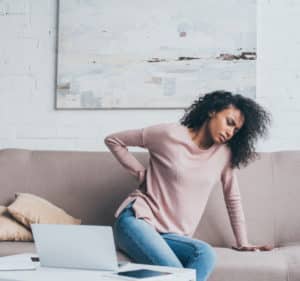
Understanding What Causes Tailbone Pain
Tailbone pain, called coccydynia, is a pain in and around the small triangular bone at the very bottom of the spinal column right above the cleft of the buttocks. The tailbone consists of three to five fused bony segments and lies beneath the sacrum, a bone structure at the base of the spine. Several tendons, muscles, and ligaments connect to the tailbone. When the tailbone is damaged, it can cause mild or extreme pain. Pain in the tailbone can come from direct trauma, repetitive injury, or degeneration of joints. Fortunately, the tailbone pain tends to improve over a few weeks or months. However, the pain can last much longer and severely affect one’s ability to carry out daily activities. If the pain does not reduce after a few weeks and home remedies, contacting an experienced spinal pain doctor may be necessary. What Causes Tailbone Pain? The tailbone is small, but it does the important job of stabilizing a person when they sit. When the tailbone is damaged, this can cause mild or even severe pain when moving as one usually would. Bruising, Fracturing, or Dislocation on the Tailbone A bad fall or a heavy blow to the buttocks can directly bruise, break, or dislocate the tailbone. In most cases, the tailbone will only be bruised and will likely heal within weeks. However, in severe cases, the injury may be more extreme, such as a dislocated or fractured segment of the tailbone. These cases may require medical attention. Anatomical Changes to the Tailbone Childbirth is one of the leading causes of tailbone bone pain. The tailbone becomes more flexible to allow the spine above it to bend for birth. This movement is a natural and necessary process for childbirth, but unfortunately, the movements may stretch the muscles and ligaments around the tailbone too far. The stretching of the muscles and ligaments may make the tailbone segments unstable, causing mild or extreme pain. Repetitive Movements Straining the Tailbone Sports such as rowing or cycling that require someone to lean back and forth while stretching your spine can result in tailbone pain. The repetitive movements may strain the tissues, muscles, and ligaments around the tailbone. Straining the muscles and ligaments can permanently damage them. This permanent damage means your muscles can no longer hold your tailbone correctly, causing pain and discomfort. Tailbone Bone Spurs Overgrown or thickened bone, called bone spurs, near the tip of the tailbone, can change its length or normal angulation. Bone spurs pinch on the skin and underlying tissue when sitting upright or leaning backward, causing pain. Being Overweight or Underweight Extra weight is placed on the tailbone when one is overweight. The additional pressure on the tailbone may cause the tailbone to lean backward or move out of place. If the tailbone is not in the proper position, this can cause extreme pain. If someone is underweight, there may not be enough fat in the coccyx area. If there is not enough fat in the buttocks to prevent


